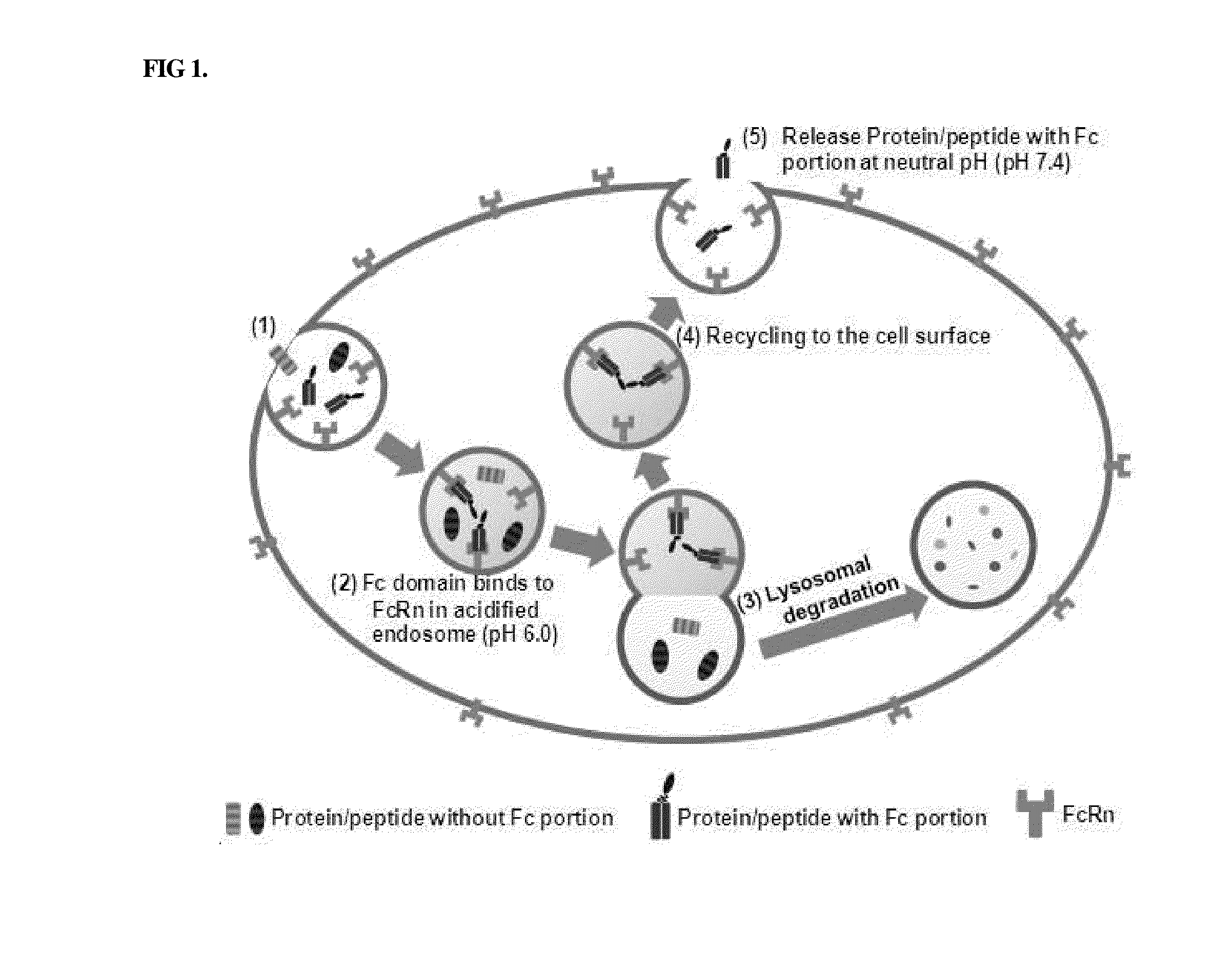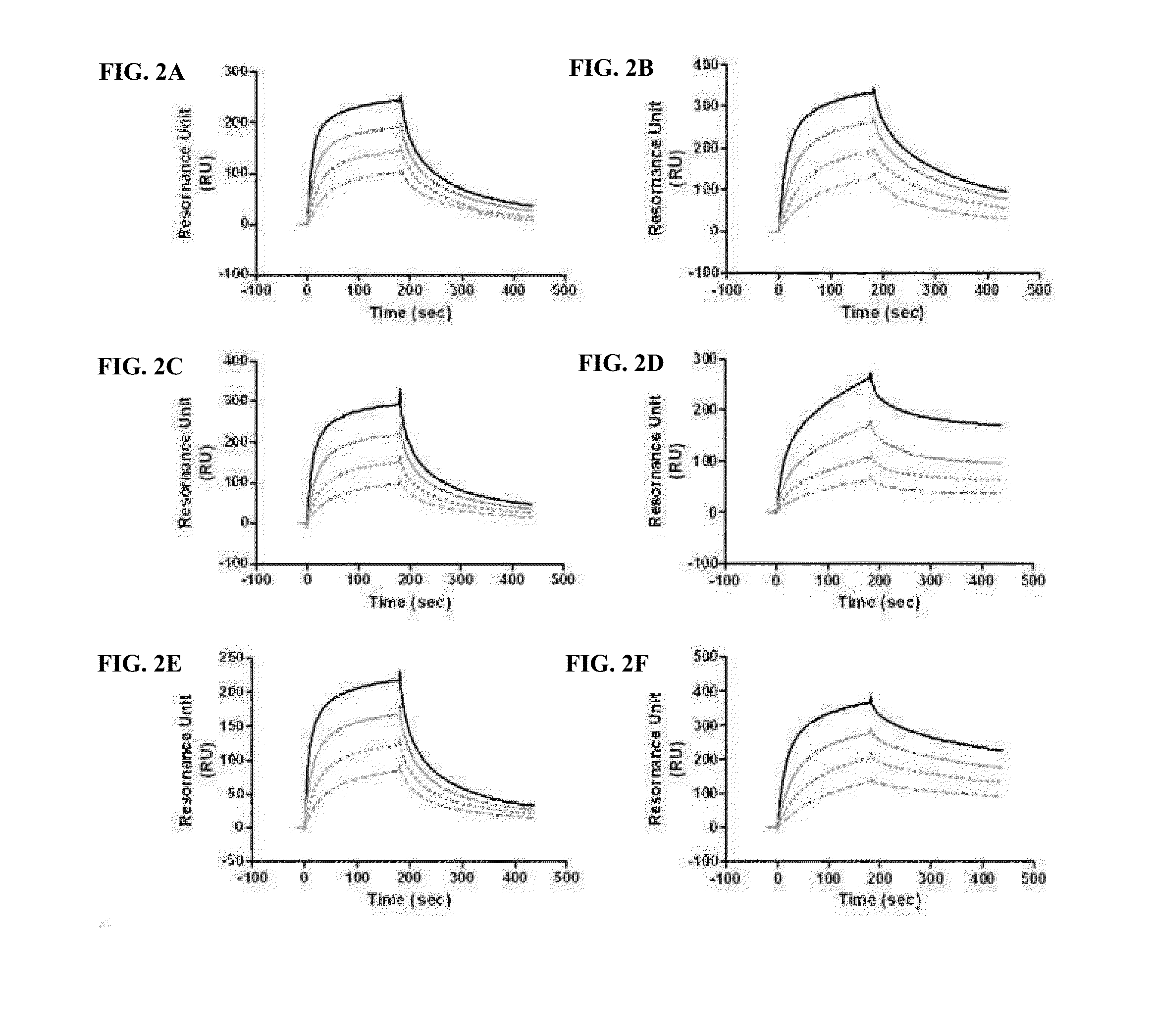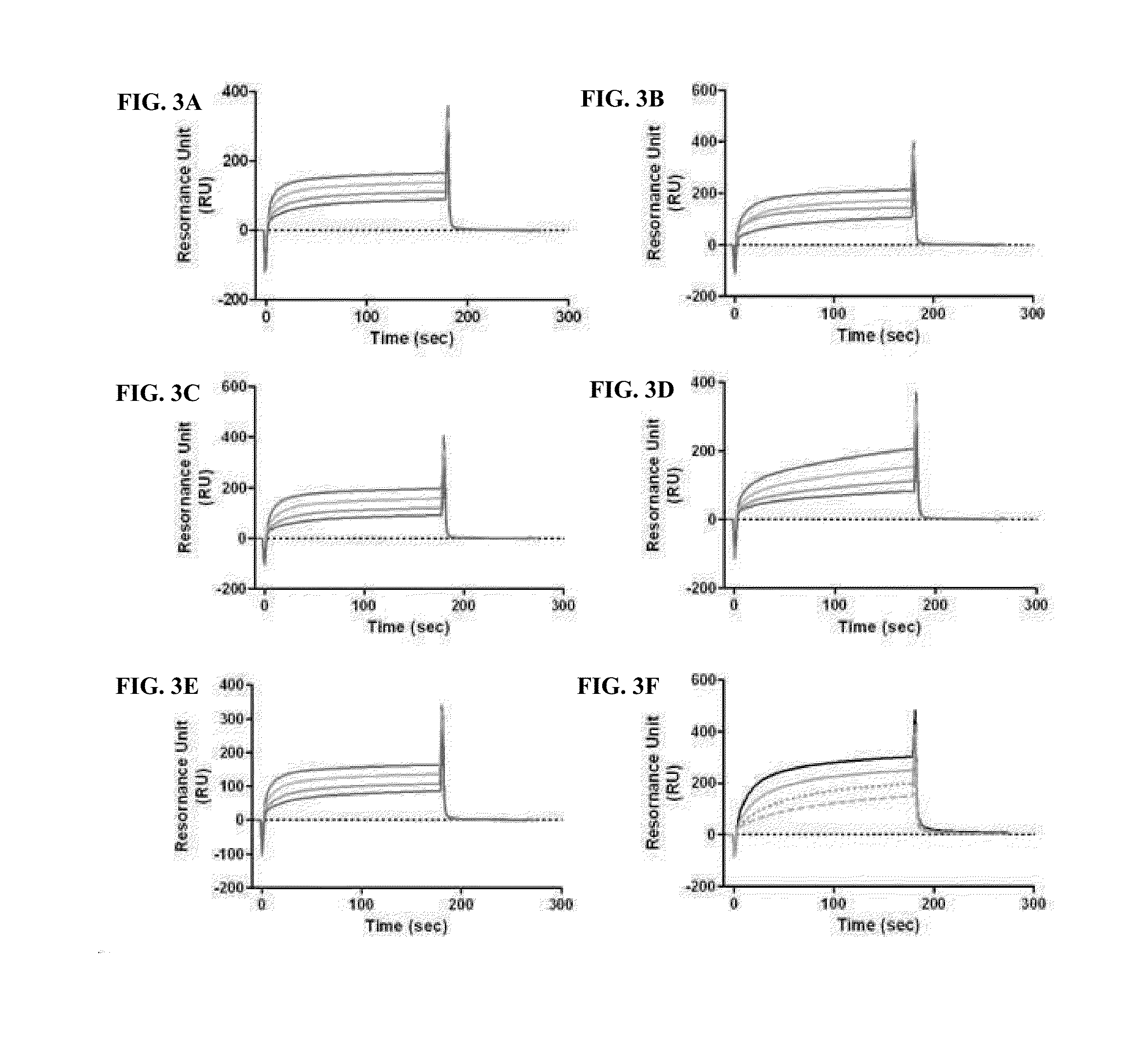Immunoglobulin fc conjugate which maintains binding affinity of immunoglobulin fc fragment to fcrn
a technology of immunoglobulin and conjugate, which is applied in the field of physiologically active polypeptideimmunoglobulin fc fragment conjugate, can solve the problems of limiting the serum half-life of a protein drug and the decrease of the activity of a therapeutic protein, so as to increase the serum half-life of a physiologically active polypeptide and facilitate dissociation
- Summary
- Abstract
- Description
- Claims
- Application Information
AI Technical Summary
Benefits of technology
Problems solved by technology
Method used
Image
Examples
examples
Preparation of Conjugates of Physiologically Active Protein and Fc Fragment Comprising FcRn-Binding Site
[0099](1) Preparation of Immunoglobulin Fc Fragment
[0100]An immunoglobulin Fc fragment was prepared according to the method disclosed in Korean Patent Application No. 10-2006-0077377 (entitled “method for mass production of methionine residue-free immunoglobulin Fc region”) filed in the name of the present inventors.
[0101](2) Preparation of Insulin-Immunoglobulin Fc Fragment Conjugate
[0102]A reaction was performed to PEGylate a 3.4-kDa propion-ALD2 PEG (IDB, Korea) specifically at the N-terminus of the beta-chain of insulin. The reaction solution was purified using a cation-exchange column. To prepare an insulin-immunoglobulin Fc fragment conjugate, the purified mono-PEGylated insulin was reacted with the immunoglobulin Fc. At this time, the reaction was performed at pH 6.0-8.2 in order to direct the insulin specifically to the N-terminus of the immunoglobulin Fc. After completion...
experimental example 1
Evaluation of Binding Affinity for FcRn
[0110]Among proteins introduced into cells by endocytosis, a protein having an FcRn-binding site binds to FcRn at an acidic pH, whereas a protein that does not bind to FcRn is removed by lysosomal degradation. When the protein bound to FcRn dissociates from FcRn at a neutral pH, it is released to the cell surface, whereas the FcRn-bound protein that does not dissociate from FcRn undergoes lysosomal degradation. This mechanism is shown in FIG. 1.
[0111]Thus, in order to examine whether the conjugate of the Example, obtained by linking the physiologically active protein via the non-peptidyl linker to the immunoglobulin Fc comprising the FcRn binding site, can maintain the binding affinity of the immunoglobulin Fc alone for FcRn or whether it can easily dissociate from FcRn at a neutral pH and can be released into blood, the following experiment was performed.
[0112]Specifically, in order to examine whether the binding affinity of the immunoglobulin...
experimental example 2
Test for Comparison of In Vivo Pharmacokinetics Between GLP-1R Agonist-Immunoglobulin Fc Fragment Conjugate
[0120]In order to compare in vivo pharmacokinetics between the GLP-1R agonist-immunoglobulin Fc fragment conjugate of Example (5) and the in-frame GLP-1R agonist-immunoglobulin Fc fragment conjugate, changes in the serum concentrations of the conjugates were analyzed using normal SD rats.
[0121]Specifically, each of the GLP-1R agonist-immunoglobulin Fc fragment conjugate (400 mcg / kg) and the in-frame GLP-1R agonist-immunoglobulin Fc fragment conjugate (400 mcg / kg) was diluted in physiological saline and administered subcutaneously to the animals at a dose of 2 mL / kg. At 4, 8, 24, 48, 72, 96, 120, 144, 168, 192, 216, 240, 288, 312 and 336 hours after administration of the test materials, blood was collected from the jugular vein of the rats, and serum was separated from the blood. Next, the concentration of the drug in each of the serum samples was quantified by an enzyme-linked ...
PUM
| Property | Measurement | Unit |
|---|---|---|
| pH | aaaaa | aaaaa |
| pH | aaaaa | aaaaa |
| pH | aaaaa | aaaaa |
Abstract
Description
Claims
Application Information
 Login to View More
Login to View More - R&D
- Intellectual Property
- Life Sciences
- Materials
- Tech Scout
- Unparalleled Data Quality
- Higher Quality Content
- 60% Fewer Hallucinations
Browse by: Latest US Patents, China's latest patents, Technical Efficacy Thesaurus, Application Domain, Technology Topic, Popular Technical Reports.
© 2025 PatSnap. All rights reserved.Legal|Privacy policy|Modern Slavery Act Transparency Statement|Sitemap|About US| Contact US: help@patsnap.com



